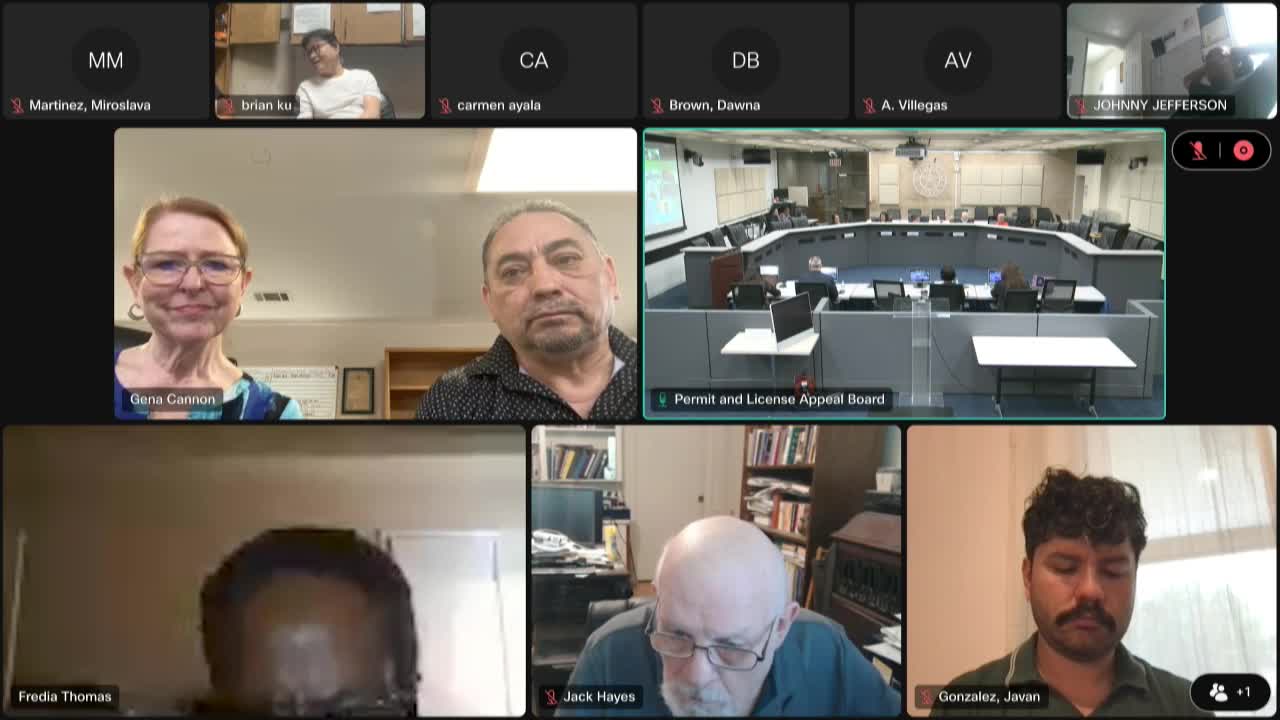Dallas Board approves Rodeo West's late hours permit after crime reduction efforts
July 03, 2025 | Dallas, Dallas County, Texas
This article was created by AI summarizing key points discussed. AI makes mistakes, so for full details and context, please refer to the video of the full meeting. Please report any errors so we can fix them. Report an error »

In a recent meeting of the Dallas Permit and License Appeal Board, the fate of Rodeo West Dallas hung in the balance as board members deliberated on a late hours permit that had been denied due to its proximity to a residential area. The discussion illuminated the complexities of urban planning and community safety, as board members weighed the interests of local businesses against the concerns of nearby residents.
Detective Monreal provided insights into the club's operations, noting that the permit denial stemmed from an automatic rule prohibiting late hours for establishments within 1,000 feet of residential zones. Despite this, Monreal highlighted that Rodeo West had maintained a commendable record over the past year, with only three reported incidents, including minor disturbances and a case of an intoxicated individual. He praised the club's security measures, which included surveillance cameras and on-site security personnel, stating that these efforts contributed to a safer environment for patrons.
The board members expressed their appreciation for Rodeo West's commitment to improving its operations. Several members noted that the establishment had shown significant progress since its last review, with a marked decrease in disturbances during late-night hours. This sentiment was echoed by board member Hayes, who remarked on the club's continuous improvement and expressed hope for a longer permit duration in the future.
In a surprising turn, the board voted unanimously to reverse the chief of police's decision, granting Rodeo West a one-year exemption for its late hours permit. This decision reflects a growing recognition of the establishment's efforts to foster a responsible nightlife while balancing the needs of the surrounding community.
As the meeting concluded, the board's decision not only allowed Rodeo West to continue its operations but also set a precedent for how similar cases might be handled in the future. The outcome serves as a reminder of the ongoing dialogue between business interests and community safety in urban environments, leaving many to wonder how this balance will be maintained moving forward.
Detective Monreal provided insights into the club's operations, noting that the permit denial stemmed from an automatic rule prohibiting late hours for establishments within 1,000 feet of residential zones. Despite this, Monreal highlighted that Rodeo West had maintained a commendable record over the past year, with only three reported incidents, including minor disturbances and a case of an intoxicated individual. He praised the club's security measures, which included surveillance cameras and on-site security personnel, stating that these efforts contributed to a safer environment for patrons.
The board members expressed their appreciation for Rodeo West's commitment to improving its operations. Several members noted that the establishment had shown significant progress since its last review, with a marked decrease in disturbances during late-night hours. This sentiment was echoed by board member Hayes, who remarked on the club's continuous improvement and expressed hope for a longer permit duration in the future.
In a surprising turn, the board voted unanimously to reverse the chief of police's decision, granting Rodeo West a one-year exemption for its late hours permit. This decision reflects a growing recognition of the establishment's efforts to foster a responsible nightlife while balancing the needs of the surrounding community.
As the meeting concluded, the board's decision not only allowed Rodeo West to continue its operations but also set a precedent for how similar cases might be handled in the future. The outcome serves as a reminder of the ongoing dialogue between business interests and community safety in urban environments, leaving many to wonder how this balance will be maintained moving forward.
View full meeting
This article is based on a recent meeting—watch the full video and explore the complete transcript for deeper insights into the discussion.
View full meeting
